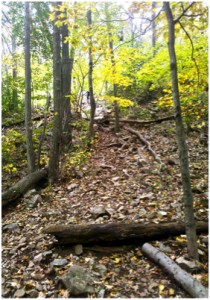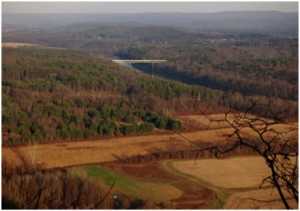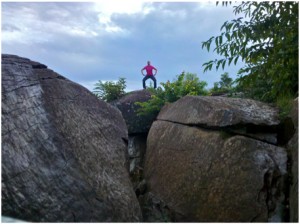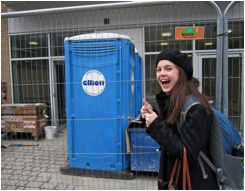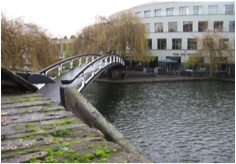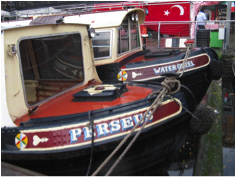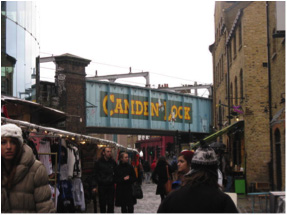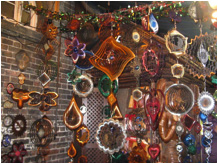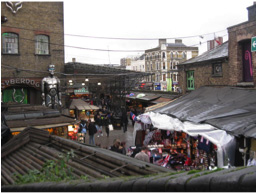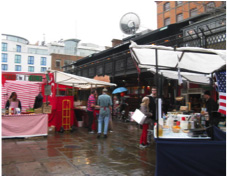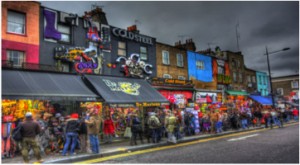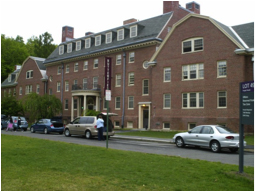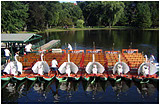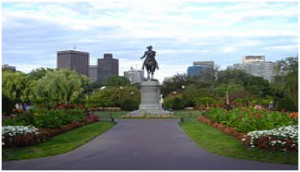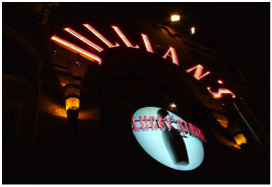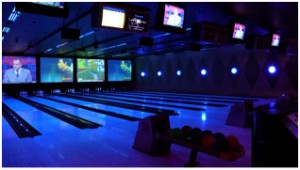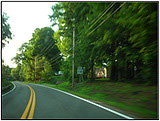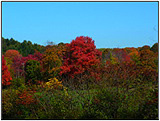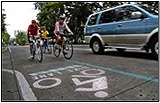By Annette Gildshtein.
It was irkingly quiet Friday evening at Zoomass. It seemed as though all the animals headed back to their origins to hibernate for the long weekend. Carrying what felt like half my belongings, I made my way down to yellow lot 11 from Washington Tower. Not even halfway down the hill, I already felt my body starting to perspire. Bags were hanging off me from every direction: a huge bag that was over-packed for a 3 day weekend swung across my body, a beige Liebskin purse crossed to the other side, and an overweight backpack just in case I ended up doing some homework. Though my shoulders were a bit sore, I toughened up and set forth to an unknown evening. All I knew was that I was headed to Franklin, CT, with the intent to go to UCONN. With gas prices too costly for my student wallet and still half a tank left, I went straight for the exit out of Amherst without any stops.
Heading North down 119, traffic started to pick up a bit towards Hadley, especially when the lanes merge into one. We crept down the whole way doing the annoying traffic dance, with one lane moving to a faster tempo than the other. In a way I didn’t really mind; I casually cruised with my windows down, steering with my knee and just observed my surroundings. Before I noticed the parking permit stickers, I could already tell which cars were students by how packed their trunks and back seats were. My favorite but brief section of the traffic was when we were crossing the bridge. Calm waters surrounded us from either side, scattered with small boats and canoes. Driving can sometimes really have a meditative effect on me. It was a relief to finally get on my way and escape into the open highway. The sun was settling deeper into the horizon and fog lights were popping up on the surrounding cars. Since I’ve never driven to Connecticut from Amherst before, I was surprised to see a pocket of industrialized beauty in such a rural environment. The structures were lit up purposefully and tastefully, showing off the distinct architecture. It was mostly comprised of what seemed like major business corporations, but suddenly something to my right struck my interest. As I got closer, I could see a spherical building resembling Disney’s Epcot Center. As I made my way past it I noticed a sign that read “Basketball Hall of Fame.” I was not only in awe at the gorgeous purple and blue ambient lights but I also had no idea that one existed here.
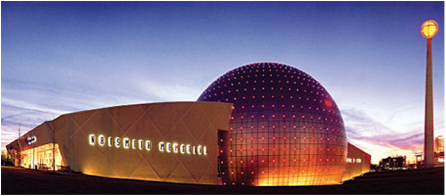
Music is what sets the tone for any trip. Whether you are driving down the street or going on a three hour car ride, music is an essential attribute to that experience. I am very indecisive about what to put on, so from the beginning I put on my favorite song from the LongSong Playlist, Luv Step 2.5. This is a fifty-minute compilation of at least fifteen different songs remixed into one, without injuring the originals (which isn’t easy, some people can really butcher a song). It’s one of those songs that you want to hear in quality headphones or have the vibes surrounding you from good speakers. I love listening to it in the car. It just makes you apart of the song and driving solo I can dance as ridiculously as I want without judgment. After about thirty minutes my brain needed a break from the high frequency bass and it was time for a change of pace. Generally I like to put my iPod on shuffle and have it decide my musical fate. One of the songs that I bookmarked in my brain was Train Song by Feist and Ben Gibbard.
Feist
Traveling north, traveling north to find you
Train wheels beating, the wind in my eyes
Don’t even know what I’ll find when I get to you
Call out your name love, don’t be surprisedFeist & Ben
It’s so many miles and so long since I’ve left you
Don’t even know what I’ll find when I get to you
But suddenly now, I know where I belong
It’s many hundred miles and it won’t be long
In a way this song summed up the whole reason of this trip. I was visiting one of my closest friends from my previous school, Iona, whom I haven’t seen in months. Though this song is speaking of an intimate relationship, it is still applicable. Any type of relationship is intimate, the stories and emotions we share between each other are unspokenly locked between us and nobody else. Those are the comforting qualities you look for in a friend.
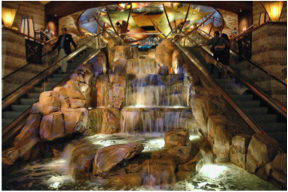
When I arrived, plans to go to UConn had been canceled. Not having many other options, we decided to go to Mohegan Sun. When you first walk in, you walk through a seemingly never ending hallway. The wall decor resembled the tribes authentic art and gives you a brief history – a perfect preface to lure you into the actual casino. Before you even reach the central area you are greeted with a set of escalators, that only overlook a small portion of the venue.
The first time I was there, it was quite dead, but this time it was alive with quite a diverse crowed. As we ventured our way passed the exhausted slot machines and packed restaurants, you can tell the distinctions between who was here to party or to gamble. Girls would pass us struggling to walk in heels pulling down their tiny, skin-tight dresses, while males snickered behind them. There was a bar in the middle of the casino that was attempting to impersonate a club (which really wasn’t successful) and had the music blaring just as loud. It was funny to see all these adults standing around in their fancy clothes, holding drinks and just looking bored. We had better plans: Ben & Jerry’s.
My friend and I waited in line contemplating which flavors to choose from. Come our turn we each asked to sample a few different flavors and would switch in attempts to figure out what our taste buds were asking for. Since we couldn’t decide we just ordered for each other. I ended up with the Peanut Brittle and for her the Strawberry Cheesecake. Since I knew she was not a chocolate fan, I knew she was pleased with my decision. The peanut butter chunks and caramel swirls were a perfect choice for me. We each finished every drop.
Not wanting to spend any more money and with the night still young we decided to meet up with a few of her friends at the local skate park. Across the street from the brightly lit Norwich Tech, ironically the darkness cloaked us from the main street. Since this was the go-to spot, not only were their beer cans scattered around, but also some abandoned liquor bottles from previous inhabitants. We just sat their looking at the sprinkle of stars, secluded from the world – except the occasional car passing by. Suddenly I noticed extra bright lights coming our way. As they approached us, I could faintly make out the word Police. Once my brain processed the situation, I quickly started walking towards our vehicle while everyone was still hanging out. Of course I got the routine questioning: What are you guys doing out so late? What is your name? How old are you? Eventually everyone got the picture. Some of them scattered throughout the woods, but thankfully my friend joined to help me deal with the situation. She chimed in explaining to the officer about our whereabouts and pretending we didn’t realize you’re not allowed after dark. As we thought things were smoothed out, she realized her glasses were missing. Instead of leaving the scene, an officer went back to the park, flashlight in hand, to help her find them . Nervous that he’ll notice our illicit activities I waited very impatiently in the car. Upon their return, my friend gives me a glance and I think to myself, “Greaaat”. Thank goodness I was the designated driver and answered all the sobriety questions on point. Once the police officer was convinced I could safely get us home, we were let go. After much unwanted stress, we were relieved to have avoided any dire consequences. We collected the “run-away” group and decided to call it a night. . .
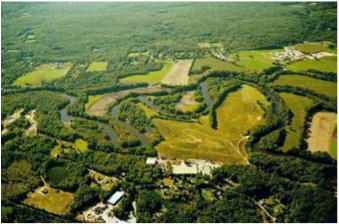
Come morning, the sun exposes Norwich’s natural beauty. Since at night the brightest lights are the moon, stars, and the occasional straggling, dim street light, you get a very limited view of the town. Though it isn’t the most impressive town, during the day there are many serene parts that are aesthetically pleasing. In many ways it’s comparable to Amherst, with its grassy patches and farmlands. At certain parts of the trip, I’d realize I’m driving in silence taking in the beauty of the scenery around me. The leaves were turning over new colors, some still attached gracefully to the branches and wiggling in the breeze. As the roads swerve between these forests, the massive trees on either side engulf you, making you apart of their world not vice versa. Sometimes a measureless, vibrantly green field comes up along the road allowing access for the suns rays to embrace you. Before I left we made one last stop to my friends favorite field. We laid out in the sun a bit allowing it to hug our skin. Though we were saying our farewells, the warmth comforted us with a promise of a beautiful day ahead. As for me, a smooth ride ahead.



